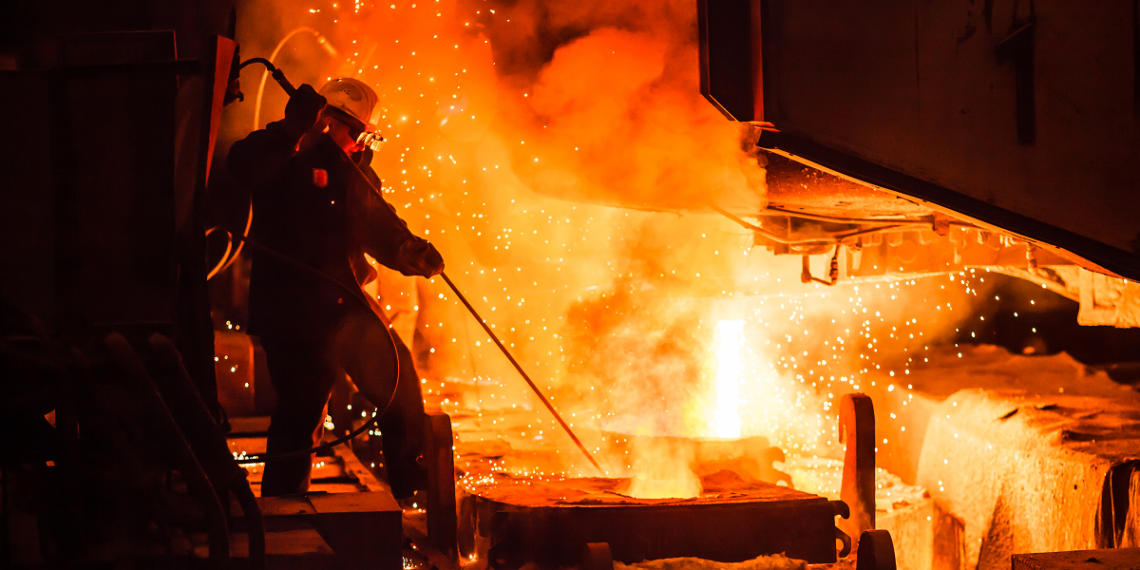When you hear term “green steel”, it sounds like it could be the name of a superhero fighting to save the planet. And according to some analysts, environmentalists, and resource companies, this is probably an apt description due to the material’s predicted ability to help reduce CO2 emissions.
Essentially, green steel is the manufacturing of steel without the use of fossil fuels. Hundreds of millions of dollars have been invested in identifying the cleanest way to produce green steel and hundreds of millions more will be spent improving on the current solutions.
Leading global resource industry research firm, Wood Mackenzie, says decarbonizing the steel and iron ore industry by 2050, in line with the Paris Climate Agreement, will require US$1.4T of investment and a revolution across every stage of the value chain.
According to Wood Mackenzie’s latest Horizons research report, “Pedal to the metal: Iron and steel’s $1.4 trillion shot at decarbonisation”, this presents an urgent challenge and an enormous opportunity.
The analysis by Wood Mackenzie points to the industrialized world’s reliance on steel, with 2.2Bt of production required to meet global steel demand by 2050 – a 15% increase from 2021.
It says that from iron ore mining to steel manufacturing, the industry is highly carbon intensive. Iron and steel production emit a combined 3.4Bt of carbon annually – equal to 7% of global emissions.
“Decarbonizing the steel industry is a staggeringly big task. To meet Wood Mackenzie’s 1.5°C accelerated energy transition scenario by 2050, steel emissions must reduce by 90% from current levels. There is an urgent need to act now to decarbonise the iron and steel sectors. Business as usual is no longer sustainable,” Malan Wu, a research director at Wood Mackenzie, and lead author of the report, said.
The analysis by Wood Mackenzie points to the industrialized world’s reliance on steel, with 2.2Bt of production required to meet global steel demand by 2050 – a 15% increase from 2021. It notes that from iron ore mining to steel manufacturing, the industry is highly carbon intensive.
BHP investing heavily
Leading international resource company BHP (ASX: BHP) has been investing heavily into developing green steel for several years.
Rod Dukino, the company’s vice president marketing sustainability, recently told a forum that BHP’s three stage framework to low or no carbon steel production was first published in November 2020 and remains relevant.
BHP states its three-stage framework covers the following:
There are multiple potential pathways to green end state steelmaking and customers are primarily focused on decarbonization of the blast furnace (BF) and direct reduced iron (DRI)/electric furnace routes. Electrolysis is generating increasing interest. The mix of technologies will vary regionally, and substantial technological development is required to support a green end state.
BHP has identified the ESF as a preferred option for processing DRI into iron because it offers operational flexibility that supports a wider range of iron ore qualities including Pilbara ores. The technology has gained significant traction with customers in Europe and Asia.
BHP continues to strategically partner with customers, research providers, and other stakeholders to demonstrate pathways to the green end state and is on track to deliver decarbonisation goals.
Mr Dukino said most of the steel today is made via the BF route and many steelmakers are undertaking actions to reduce carbon in the first phase, termed “optimization”, through raw materials selection and best-in-class practices around gas and heat utilization.
“Market leaders are trialling projects related to the transition stage, either through retrofitting existing BF based steelmaking with low-carbon technologies or trialling electric furnace technologies fed with either scrap or DRI.
“The key levers in relation to the BF are replacing as much coke with hydrogen as possible, intelligently recycling waste gas streams, and the use of CCUS [carbon capture, utilization, and storage] to capture carbon dioxide from selected gas streams.
“The transition phase will play a necessary role in making a material reduction to carbon emissions in the medium-term, until the technology, economics, and infrastructure required to support steelmaking in the “green end state” are viable.
“Moving from the transition to the green end state, where steel can be produced at or near zero emissions, is primarily about the introduction of cost competitive renewable electricity and green hydrogen at scale,” he said.
Green hydrogen
The development of green hydrogen has been identified by many analysts and industry participants as one path to helping to increase the production of green steel.
Leading iron ore producer, Fortescue Metals Group (ASX: FMG), recently showed its liking for green hydrogen’s future when its subsidiary Fortescue Future Industries entered into a global strategic collaboration with energy infrastructure developer Tree Energy Solutions.
The collaboration aims to accelerate the development of a world leading green hydrogen and green energy import facility in Germany. The investment of €130M (US$127M) will be funded by Fortescue Future Industries’ unutilized capital commitment and provides the company with a pathway for access to critical infrastructure to execute its strategy.
Tree Energy Solutions is developing a portfolio of terminals globally that will enable transportation of green energy. The first phase of this partnership is to jointly develop and invest in the supply of 300,000t of green hydrogen with final locations being currently agreed, and a financial investment decision targeted in 2023.
The first delivery of green hydrogen into Tree Energy Solutions’ terminal in Wilhelmshaven, Germany, is anticipated to take place in 2026. Initial collaboration projects will be focused on Australia, Europe, the Middle East, and Africa.












